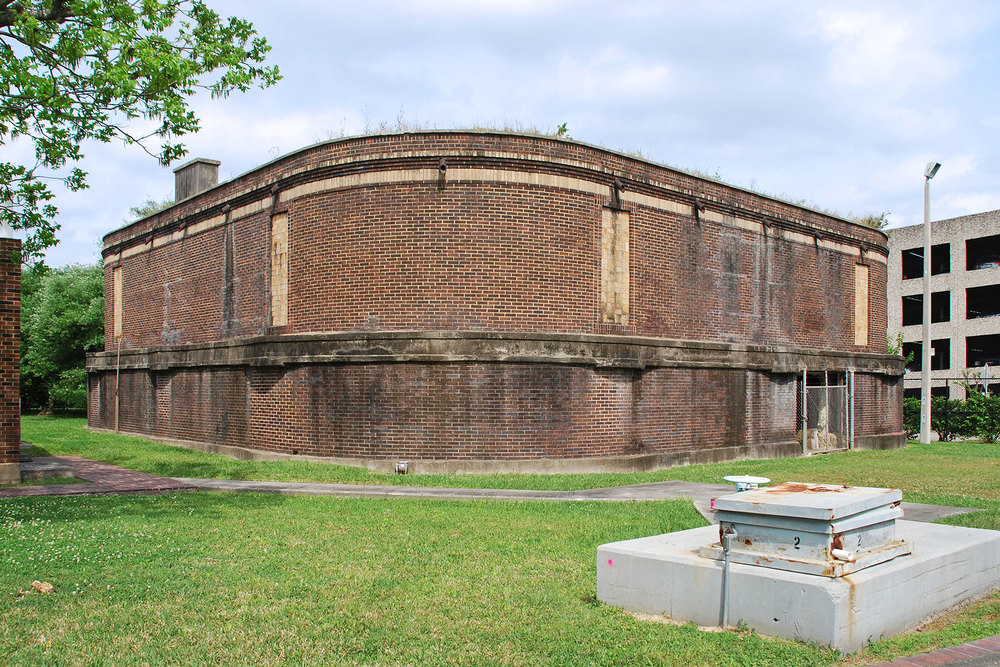After a few short weeks, the drive from the BRAVE / Architecture office in Montrose to my newly unpacked home in the Heights became the first, and only, trip I could make in Houston without the assistance of Google Maps. As a recent transplant from Denver, Colorado, the drive home was drastically different from my former commute; however, with this new-found independence on the road, I could finally look around. My favorite, ‘you’re almost home!’ landmark on this brief journey became a mysterious, two-story, brick building. With generously rounded corners, boarded-up windows, and walls that were stained by years of mineral deposits and the ghosts of graffiti, it certainly caught my attention. Grasses and weeds have taken up residence on the roof, creating a miniature meadow, while wildflowers sprout up from the ledge. Sited close to the road, some tangled shrubs and a chain link fence separate the busy street from this overgrown, seemingly forgotten structure.

After a bit of research, it turns out this building is in fact far from forgotten. Formerly the Heights Waterworks Reservoir Building, the 750,000-gallon reservoir was built in 1928 and placed on the National Register of Historic Places in 1983. Because of this status, the building cannot be demolished. However, taking a page from the Buffalo Bayou Park Cistern rehabilitation, the Heights Waterworks Reservoir is staged to undergo a renovation of its own. The site, including two pumping stations, is currently under construction and is set to be completed in the near future. The development includes several local restaurants and retail spaces that will incorporate the existing structures. A rendering even shows a grassy, rooftop patio over the reservoir, a whimsical play on the current, green roof that I’ve been admiring.

Complexity is often what makes older buildings so interesting. The layers of the building – its past and present use (or disuse), the logic behind the design, the material and structure – tell a story. When these older buildings are celebrated and reinvented, their story is embellished, and new characters are added. I am glad to know this small piece of history will soon be resuscitated with a fresh purpose. A very small part of me however, will miss the natural, romantic quality of its current state that softly reminded me of the familiar, wild landscapes of Colorado.
